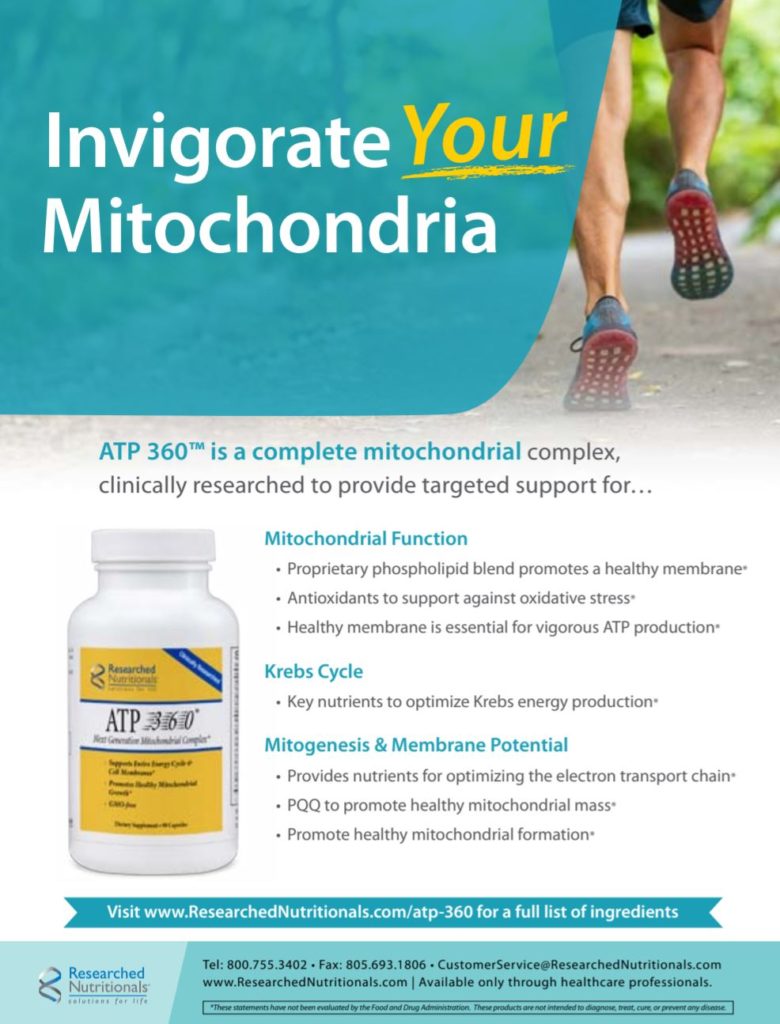By Hal S. Blatman, MD
Introduction
Pelvic pain has many causes that can be tested and diagnosed using well-known instruments and methods. Many of these cases are then easily and successfully treated. This article is not about these open-and-shut cases; it is for the people who continue to suffer, as well as the healthcare personnel trying to help them.
There are many men, women, and children with disabling and unrelenting pain despite continued efforts to find and treat the sources of their issues. For these people, there are options for surgery, ongoing therapies, and various medications that may or may not mitigate chronic and life-shaping pain.
To complicate matters, healthcare providers are taught that our diagnostic technology accurately determines what is causing pain in the body. So, when testing does not discover a cause, we are often taught that a person has “made up pain”; that it is “all in their head.” And yet, I have never examined a person with pelvic pain who had no relevant markers that could be improved.
I first discovered my own pelvic pain when activities that had once been easy, like tennis and exercising at the gym, became difficult. Suddenly, reaching sideways to hit the ball, or doing a seated leg press, caused a strain to my groin, hamstring, adductor and gluteal muscles all at once. A week later I still had not slept through the night without waking up when changing positions.
Every facet of life can be affected by pelvic pain. It’s not just bowel, bladder, and sexual function, but ambulation, sitting, and quality of sleep. I feel grateful that I knew about and had access to the effective treatments described in this article, and I think all the time about those who don’t.
Some Common Treatments
Finding the physical source of pain is synonymous with finding the places where our biology and engineering have structurally failed. Unfortunately, we have been taught to perform our investigation with laboratory equipment and imaging studies, such as MRI, EMG, and CT scan, which lead us toward therapies that do not work.
I have seen many people, especially women, wearing pelvic braces based on the understanding that their sacro-iliac (S-I) joint is their major issue. They are generally able to maintain function with a variety of pelvic floor therapies, adjustments, injections, and bracing, but they live with pain.
Alternately, when our sophisticated diagnostic imaging cannot find an obvious cause for a patient’s pain, we blame it on a nerve and call it pudendal neuralgia. Many patients who call our center ask whether I treat pudendal neuralgia, and do not even consider the possibility that their pain may have little to do with their pudendal nerve. To their credit, the doctors on their care team have all agreed that neuralgia is the issue, and that they must seek treatment that interrupts the nerve’s signal by drug, ablation, or surgery. In my experience, pelvic pain is rarely due to a pudendal nerve injury, and surgical options for treatment should rarely be considered.
Lyrica has become a popular pain medication for pelvic complaints, but it reduces pain by making our nerves “numb.” Not being able to feel is quite different from reducing pain by healing. And higher doses often make patients more forgetful and sleepy, as other parts of the nervous system are adversely affected. Any medication that reduces a patient’s ability to sense injury and pain can more easily allow further aggravation.
Unfortunately, it is a rare provider that will give you a comprehensive physical examination (pelvic, thigh, abdominal, and gluteal), not merely to poke you and ask about tenderness, but to understand underlying fascia texture changes that occur from injury. Your pelvic floor therapist may have helped you find some relief, but they cannot provide the level of fascia reconstruction needed to hold your body together and get you out of pain.
Of the myriad techniques that have arisen to alleviate suffering (therapies, braces, and tools to address the mind, spirit, energy fields, emotions, biochemistry, and biology of those in pain), the treatment theories and activities that are most effective are the ones that have a significant effect on the biology of our fascia.
Fascia
Fascia refers to the assimilation of collagen, elastin, fibronectin, hyaluronic acid and other components that hold our bodies together. Facial tissue is made by fibroblast cells, and it surrounds every muscle cell and fiber, and the entire muscle; it attaches, weaves, and anchors muscles to the fascia that covers our bones, and keeps our organs, nerves, and blood vessels in their place. Collagen fibers, of which there are many forms, provide strength to ligaments and tendons.
Fascial tissue is affected by everything we eat, see, hear, think, touch, and do. My article about fascia and pain in the November 2018 issue of this magazine describes how a lifetime of fascia injuries transcribe to chronic pain, which can be resolved by unkinking the fascia trigger points (also called myofascial trigger points) and restoring the areas where fascia anchors and holds a person’s biology together. In a similar vein, what we can find from examining the fascia can explain many of the intricacies we hear as people describe their pain symptoms.
Once you understand this paradigm, you will view your patient and their anatomy through a different lens, which you can then tune to other body systems, and use to treat localized pain in a whole new way. In this article, we are looking through the lens of the Blatman Pain Paradigm with the specialized knowledge of how it applies to the pelvic region.
Fascia is a totally different “animal” (compared to spine, disc, and nerve) when considering any particular origin of pain. Most importantly, lifetime injuries to fascia are the underlying cause for almost all pain in our bodies.
Roughly 80% of the information coming to our brain from our periphery originates from free interstitial nerve endings within the strands of collagen and ground substance that make up our fascia, which primarily measure shear forces (friction) and pressure. They are part of the autonomic sensory nervous system, and the signals they transmit can become neuropathic pain. Sidenote: While it is good for academics and researchers to learn about the difference between nociceptive and neuropathic pain, the reality is that they cannot be distinguished by clinician or patient, and the distinction is not relevant for determination of cause, decisions about medication, or any other part of treatment. Pain from trigger points is autonomic afferent pain, and as such it is all neuropathic.
With equal importance, it should be recognized that inflammatory food and environmental toxins, however minimal the exposure, can induce an immune-fascia body-wide reaction that adds pressure to these nerve endings and “lights up” these areas of injury, sometimes for several weeks. High quality bodywork and treatment will not be as effective if a patient is eating food that is inflammatory to their immune system and fascia. (While it is important to identify and heal old injuries, merely decreasing or no longer ingesting inflammatory foods can reduce a total pain burden by more than 50% within 4-6 weeks.)
Pelvic pain symptoms and conditions, as seen through the lens of the Blatman Pain Paradigm, vary widely. Many of them are actually recognized and thought to be discrete conditions or diseases. They include the following:
- Painful burning urination
- Interstitial cystitis
- Painful sex
- S-I joint pain
- Penis pain
- Clitoral pain
- Prostatitis
- Psychogenic pain
- Fibroids
- Endometriosis
- Vaginal pain
- Rectal pain
- Vulvodynia
- Pudendal neuralgia
History of Injury
History-taking is important with special reference to injury involving tail bone, pelvis, thighs, and hips. There are usually multiple injuries resulting from a lifetime of impact and repetitive strain to these tissues, including from childhood gymnastics, falls, soccer, cycling, and running. Specific injuries are not always remembered and may have been insidious. Next, it is incredibly important to define the specific locations of symptoms. Verbal descriptions are rarely sufficient to help and require too much time for accuracy. Much better is the pain diagram that the patient shades by color according to numbness/tingling (yellow), cramping (green), burning (red), and pain (blue). You can expect to see highlighted, to various degrees, the inner thighs (most consistent, fig 1), lower abdomen, buttocks, coccyx, and rectum.
Physical Examination and the Blatman Pain Paradigm
Finding the most important fascia-based sources of chronic pain requires physical examination by touch. I believe there are two main goals for this kind of a physical examination.

- To learn what the injured body has to tell that the person has not been able to adequately sense or express.
- To make sure that what the examiner feels on their side of a person’s skin very closely matches what the person feels on their side.
In other words, the examiner needs to be able to independently determine trigger point and injured enthesis of fascia by texture during palpation. Actual tenderness and report of sensitivity should be mainly confirmatory to the examiner. This specific technique of examination leads to a mapping of injured tissue according to the Blatman Rules for Pain CSI.
The Blatman 5 Rules of CSI for finding fascia injury and healing from pain:
- You cannot believe the pain comes from where you feel it.
- You cannot believe what the pain feels like.
- You can only believe that where you are specifically tender, mm by mm, indicates where your fascia is kinked and tied in a knot, or where your fascia anchors, holds you together and is injured.
- The places where you are specifically most tender represent the fascia kinks (myofascial trigger points) and injured areas of anchoring (fascia enthesis) that produce most of your worst pain.
- As soon as you unkink the fascia, and repair how you hold together, the pain you used to have will go away.
This approach seems to work most of the time, no matter how long a person has suffered from chronic pain. And no matter what the suspected or even ‘proven’ diagnosis, there is virtually always a myofascial component to the symptoms. Most of the time, just treating this ‘component’ will have profound effects. And this approach should always be done before an irreversible procedure. Often surgery causes additional injury that makes recovery more difficult.

Color coded and intensity/severity are
generally indicated by darkening.
Physical examination of fascia by texture is the single most important technique in both diagnosis and treatment. Understanding the texture of injury allows a physician to know where someone is tender, and even the degree of tenderness, independently of the patient’s response.
With pelvic pain, the most significant injuries are usually between the knees and belly button. Examine all the fascia of the thighs, pelvic floor, gluteals, and lower abdomen for specific differences in texture and tenderness. Most likely the proximal adductor and hamstring muscle fibers will be very tight, stuck together, and tender. Palpate also the enthesis (attachment) of these muscles where they meet the femur, pubic bones, ischial tuberosities (sit bones), and more. For the most part, a tender enthesis is an injured enthesis, and those that are more tender are usually also more injured.
You can feel your own body to become familiar with how tight and tender the muscles of your inner and posterior thighs are. Touch your pubic bone in the front below your abdomen and then follow the bone along the inside of your thigh toward your sit bone. (Fig. 2) Any tenderness along these bones likely reflects the degree of injury to the fascia anchors of adductor, hamstring, and pelvic floor muscles. And if these areas of anchor are not strong enough for the muscles that pull against them, then every time you use these muscles the fascia kinks may cause enough pain to shut you down. This includes bowel and bladder relief, walking, and other activities requiring use of thigh, gluteal and pelvic muscles.

(areas of anchor) from the pubic bone (A)
along the pelvic floor (B) to the sit bone (C).
These same textures and tenderness to touch can be identified all over the body. The textures of muscle, ligament, tendon, and enthesis vary with degrees of health and injury. The challenge is to learn to understand the texture of injury and the pain patterns from injured fascia.
When examining a patient with pelvic pain, expect to find tight and tender proximal inner thigh muscles and tendons. Both adductors and hamstrings can be involved. Look also to palpate the lower pelvic rim, all around the ischial tuberosity, and all that flows from the thigh muscles. This then needs to be repeated for gluteal and abdominal muscles. Inner thigh muscles are almost always involved in causing anyone’s pelvic pain. Indeed, they are often the driving force for the worst pain. Gluteal muscles are also almost always involved. It is generally important to examine all the hip and thigh related muscles that participate in locomotion.
Now apply rule 4 from above: the places that are specifically most tender reflect the injuries through a lifetime that are causing most of the person’s pain. Treatment should direct healing efforts to these areas of injured tissue. Primary goals include unkinking the knots of muscle and fascia and restoring integrity to injured entheses. As these areas become less tender, more and more of the pain will go away. Keep in mind that the pain always comes from an orchestra of fascia injury and failed repair. When the tubas quiet, it is easier to hear the viola, and pain may seem to move.
Your treatment must unglue the stuck fibers and repair the injured muscle/fascia anchors. More important, as long as these areas of tissue remain tender, pain cannot be solely attributed to neuralgia, endometriosis, or even interstitial cystitis. There is still work to be done to reduce the myofascial component of the pain pattern.
Treatment of Pelvic Pain
It is not difficult to find tight and tender muscles and fascia. What is difficult is making people realize that none of the tenderness is benign or unimportant, and all of it must be decreased enough for pain to improve.
Stretching can be helpful, but most of what patients are taught are variations of pulling on the ends of the muscles. If you are trying to get a non-slip knot out of a shoelace, do you pull on the ends? Well, it does not work well for muscle and fascia either.
Real stretch and unkinking of fascia is done from the inside by a needle, or from the outside using the skin as a handle, as taught by Ada Rolf as fascia stripping. For these techniques to be most effective, there are three requirements:
- Enough pressure on the tissue to be useful
- Enough friction so the skin becomes the handle for the fascia underneath
- Slow enough movement that the fascia has time to unkink as you go
Pain that is coming from this fascia will be different (usually improved) as soon as the tissue changes with your stripping. And the more the fascia is released, the more the pain will go away. If the fascia re-tightens, however, pain will come back. There are basically three reasons pain points come back after the muscles and fascia are released and unkinked.
- The enthesis is still kinked and cannot support the muscle staying more laminar.
- The enthesis is not strong enough to support what the muscle has to do and slips again.
- Food is too inflammatory to the immune system, and the fascia ‘glues’ itself back together.
Of these, often the most important factor inhibiting recovery is food that is inflammatory to a particular person’s immune system. Of all the diet suggestions for pelvic pain, this list of foods are most important to avoid:
- Wheat
- Sugar
- Potato
- Juice
- Artificial sweeteners
- Hydrogenated fake fat
- Dairy from cow
- Many people also need to avoid fruit, due to epigenetic changes, and our inability to metabolize natural sugar from fruit.
Decreasing inflammatory food will hopefully provide a concomitant decrease in pain. However, if a person wants to feel really good, they have to completely eliminate inflammatory foods from their diet. This conversation is about setting off an immune system reaction; and when a person is sensitive to bee stings, it only takes one to kill.
Interstitial cystitis is often treated with repeated rounds of–– and sometimes chronic––antibiotics. There may be bacteria identified, but predominantly the treatment is based on symptoms related to painful urination. The typical person-with-pain diagram (see Figure 1) had a history of this scenario for three years before seeing us. Initial treatment was directed to her diet, inner thighs, and buttocks. Much of her pain reduced, until circumstances required increased physical exertion and ingestion of flour and sugar. Before contacting her other doctor and requesting antibiotics, she redoubled her efforts with regards to dietary changes and performing prescribed exercises and was able to decrease her ‘bladder’ symptoms.
Chronic prostatitis is another pain condition generally treated with repeated antibiotics. Fortunately, it is generally a very similar scenario for treatment of pelvic and rectal pain in men as is described for women. Injuries are often similar, as are areas of tenderness.
As long as the fascia of thighs, pelvis, gluteals, and abdomen is kinked and tender, it is still likely to be the cause of pain. But keep in mind, “healing to perfection” is not necessary. All that is needed is for your injuries to no longer be a blip on your pain radar.
Conclusion
Pain does not occur without cause. And often the cause is latent, repeated wear, tear and injury. Pelvic pain in men and women can usually be attributed to years of micro-tears in the muscles and fascia of the thighs, abdomen, and pelvis. Pain is not intractable and does not come from nerves, so we should not be killing nerves and ablating tissue to relieve pain. We should be reducing body-wide inflammation and striving to identify and heal the fascia injuries that accrue over a lifetime. Coping skills are useful, but the best treatment for chronic pain is to make it go away.
Hal S Blatman, MD, is founder and medical director of the Blatman Health and Wellness Center, based in Cincinnati, Ohio, and also in NYC and Seattle where he is affiliate faculty at Bastyr University. When we look through the lens of integrative/functional/holistic medicine many feel that this new world is much different than the medicine we were taught. Looking at pain through the lens of the Blatman Method opens up an understanding of injury and healing from pain that sets a new standard for care. Dr. Blatman leads a team that specializes in restoring our biology from the many dimensions of injury, utilizing 30 years of experience in medicine.








